Day 9, early morning nature walk.
"Knock knock". Time to get up for our 6:30 am foot-tour nature walk.
Coffee and light breakfast foods get us moving. We'd found out yesterday that there was really only enough hot water for one shower in the morning. I, as the female, of course claimed it. (When we mentioned this to the staff, they turned up the hot water system. Tonia calls hot water heaters "geysers", which gave us a laugh. But that really is the term for a hot water heater in South Africa.)
An armed guard accompanies us on this trip, because we are on foot. He and Simeon and the rest of us get into the boat that takes us a little way down the river. We get out at a pretty spot that shows a lot of erosion and mini-grand canyon style formations. I left my camera behind on purpose, because we didn't expect to see many animals - in fact, we hoped we would not see big or predatory animals on this trip.
Simeon knows everything about the wildlife in southern Africa. He is a Zimbabwe citizen who has a work permit for Zambia, and is employed in the tourism profession. (We can see Zimbabwe every day, as it is just across the Zambezi River.) Simeon uses his smart phone constantly, and believes that it is just that sort of technology that will bring Africans into mainstream world culture. The power of knowledge. He sure impressed us, both with his intelligence and his wit.
So, what did we see on the nature walk? We saw termite mounds and learned that termites cultivate fungus gardens. The termites never come above ground; they travel through underground tunnels to gather wood a long way from the mound. Here is a photo of a termite mound (and a tree) that we saw in Chobe National Park:
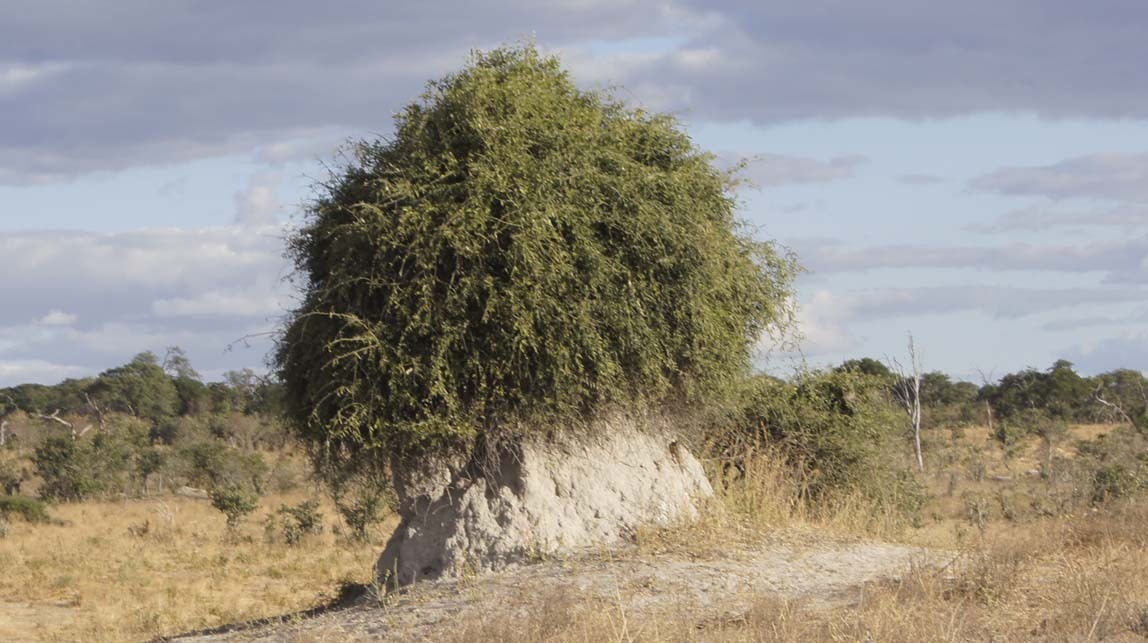
We saw pottery and other artifacts of tribes that used to live in the area. When the area became a national park, they moved all of the natives to other parts of the country. This causes great grief to these peoples to this day, because they believe that they need to live where their ancestors are buried in order to have proper guidance for their daily lives. A sad story with no resolution.
We saw a lot of animal tracks. Impala prints were everywhere. Hippos made narrow paths inland; you didn't see individual prints, just the path. Simeon showed us elephant prints, and explained how an elephant print can be actually two overlapping footprints. When walking, an elephant places its back foot in the same spot where the front foot had been. When they go faster, the back foot will step further forward. Thus, you can tell how fast an elephant was moving by studying the footprints. Here is a photo of an elephant print that I took in Chobe National Park:
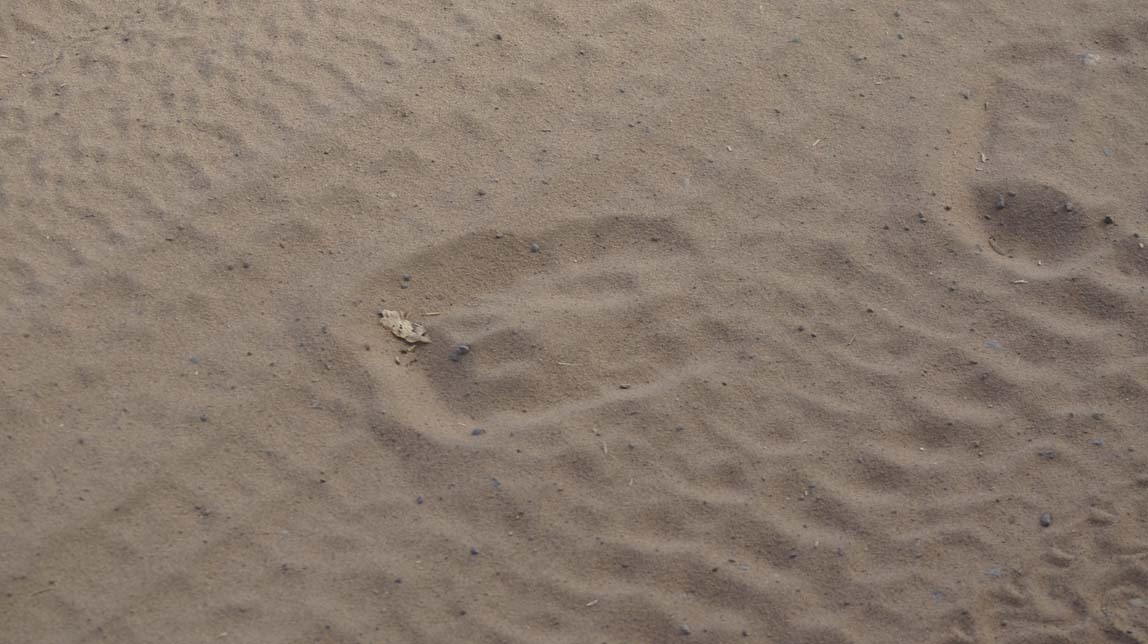
We also saw a lot of animal dung. Elephant dung has a lot of local uses, and can be made into paper. As with a lot of animal species, impala dung helps males mark their territory.
Simeon picked up a piece of impala dung. Then he said, "Boys in the villages have a lot of time spent sitting around, thinking of things to do. One thing that all boys everywhere like to do is show their skill. One game is to put a piece of dung in their mouth and see who can spit it the furthest."
Then he looked at the guys in our group. "Try it" he said. He handed each guy a piece of dung and in fact, he put one in his own mouth. The dung was dry and odorless. In turn, Ted, Doug, and John put a piece of dung in their mouth, and lined up. "One, two, three, go!" and they spit the dung out.
Who won? I forget. But us girls giggled a lot. To this day, we think Simeon was just pulling our legs and having a good laugh on our account, but we are not really sure.
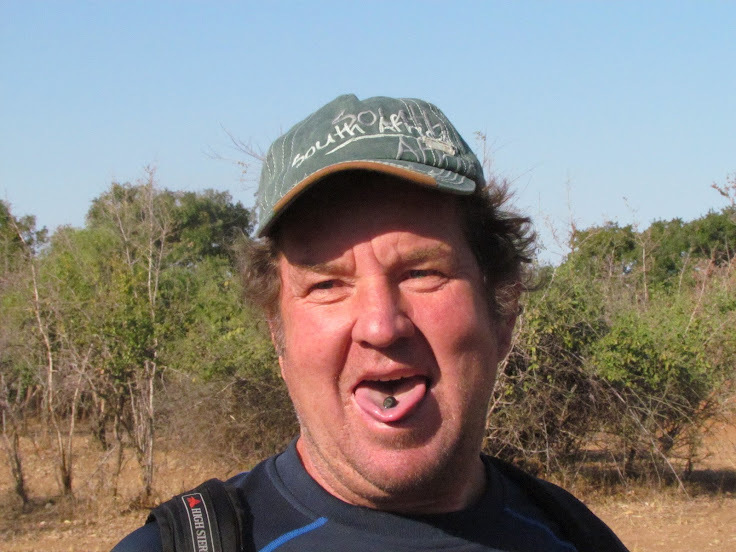
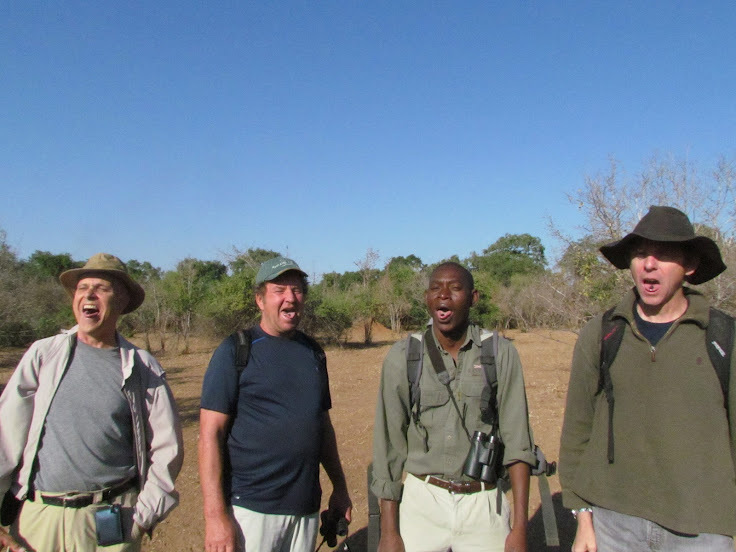
photos courtesy Tonia
We gathered around a huge double-baobab tree for a group photo. These are Tonia's photos - thanks Tonia for sending them to us.
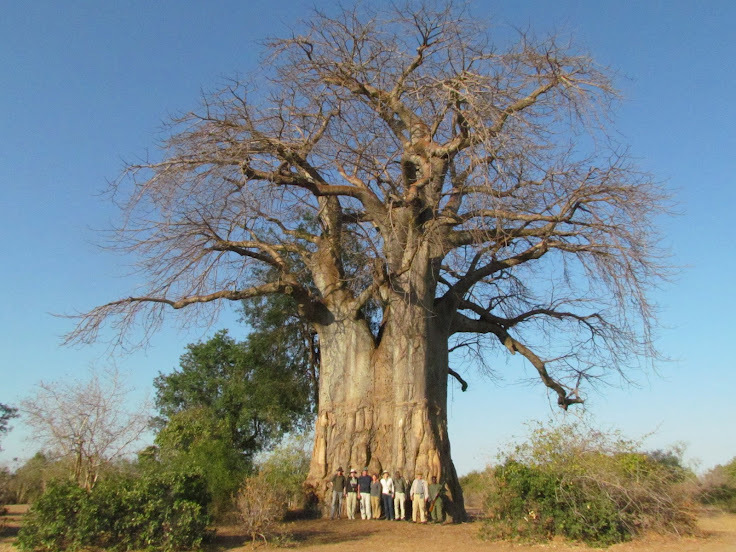
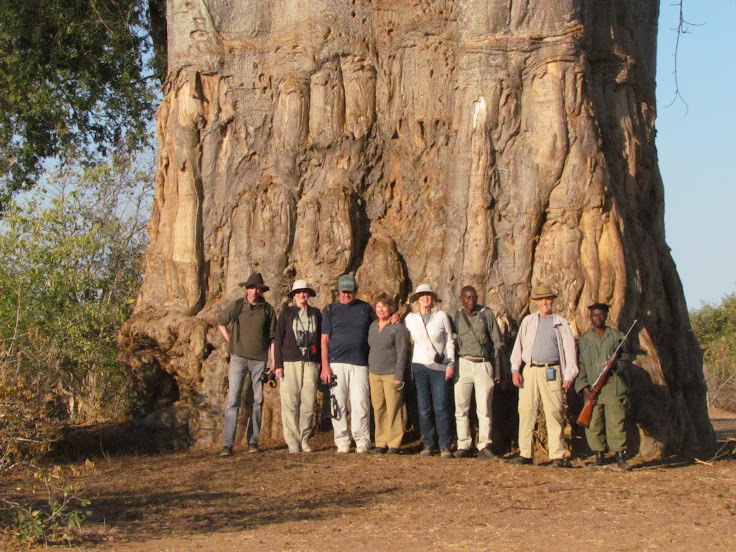
By about 10 am we return to our lodge. I took some photos of our tent as we lounged around, resting for our next adventures.
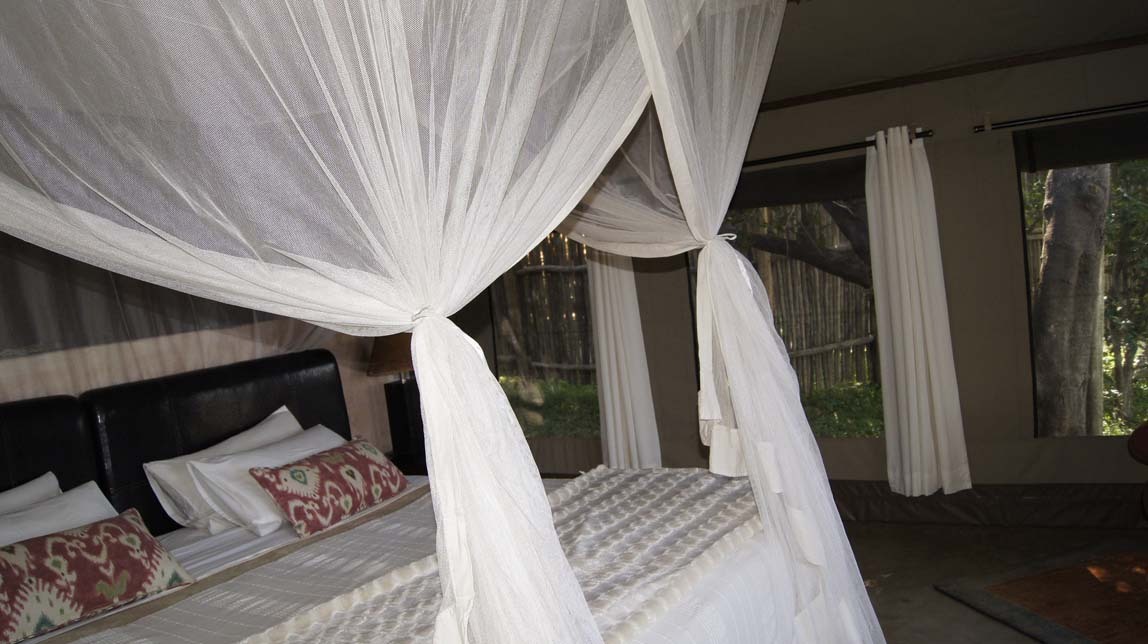
The desk and my "charging station", and John out on our deck. The lodge area is powered by a generator. The electrical system is different from in the US, but I had brought a converter for my iTouch and camera battery charger. Free wi-fi was available up at the lodge.
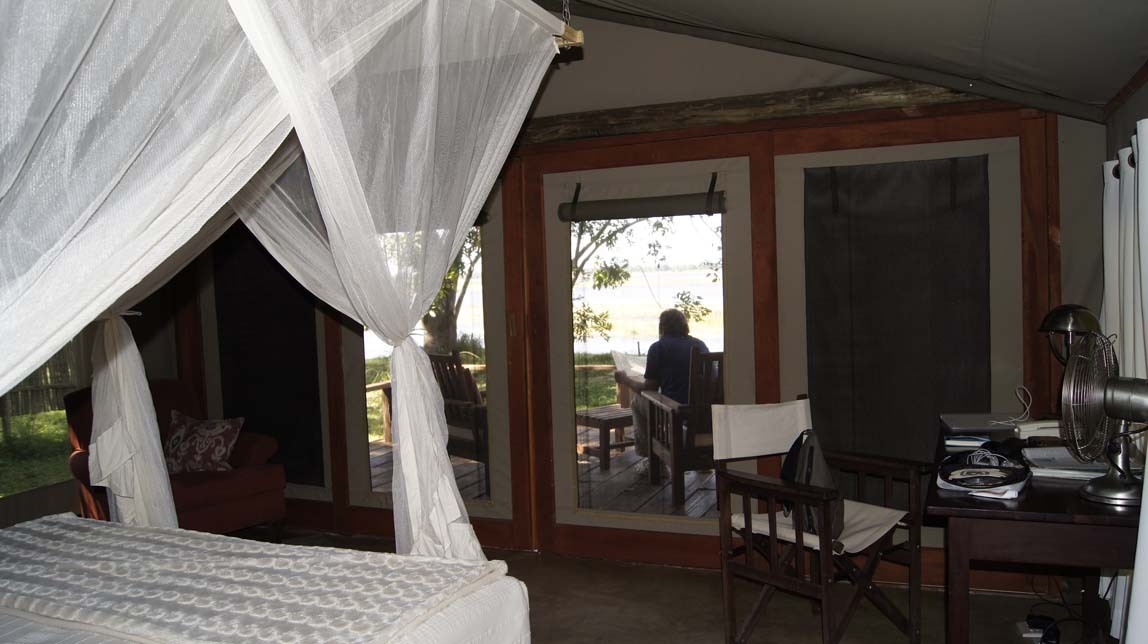
The toilet area:
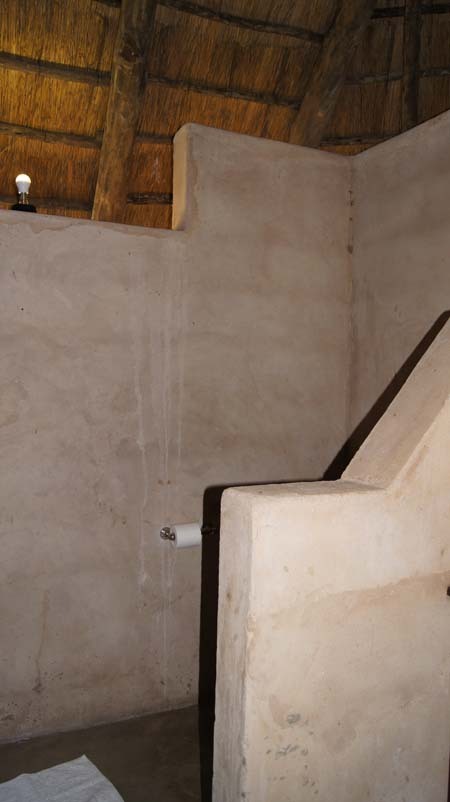
Sink:
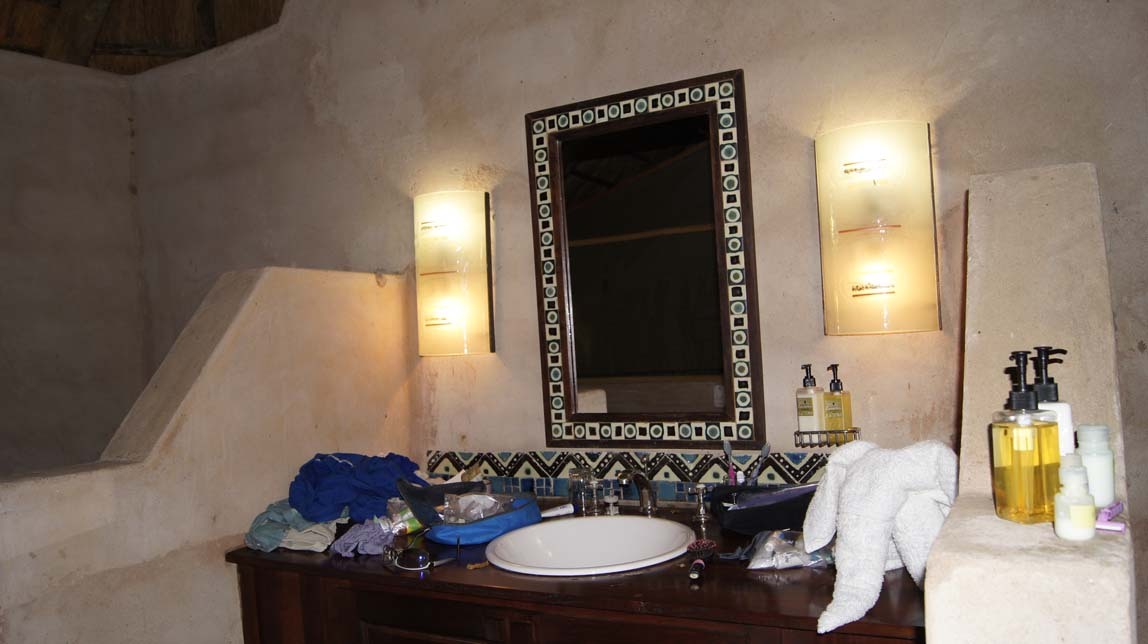
Shower:
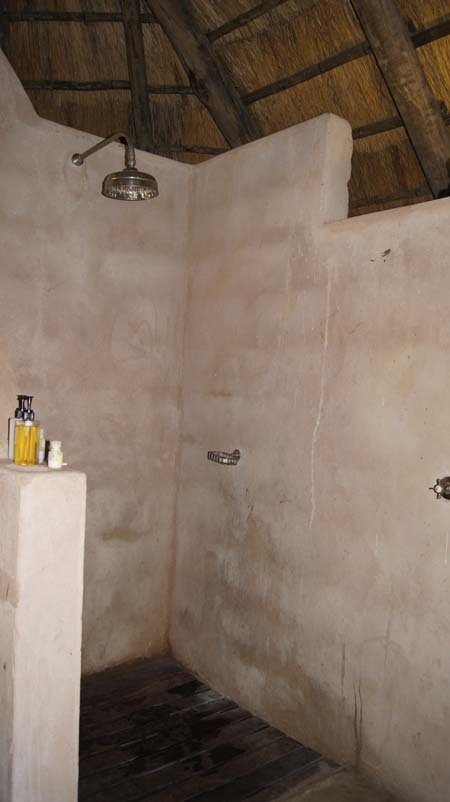
Entry to the bathroom:
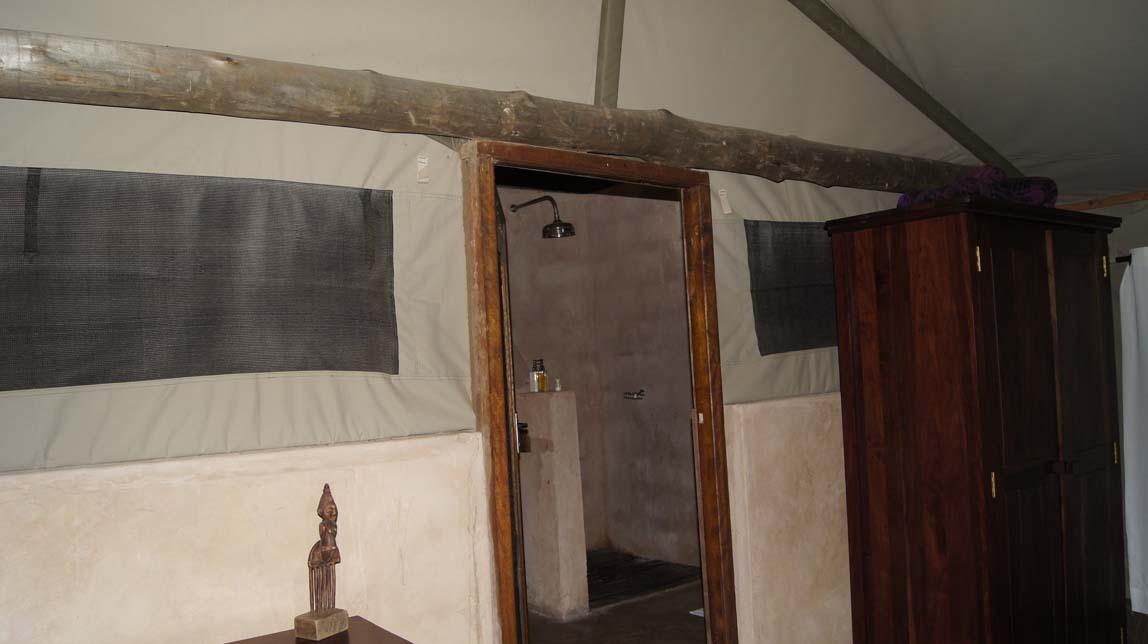
Navigation: first safari blog entry
Next blog entry
Coffee and light breakfast foods get us moving. We'd found out yesterday that there was really only enough hot water for one shower in the morning. I, as the female, of course claimed it. (When we mentioned this to the staff, they turned up the hot water system. Tonia calls hot water heaters "geysers", which gave us a laugh. But that really is the term for a hot water heater in South Africa.)
An armed guard accompanies us on this trip, because we are on foot. He and Simeon and the rest of us get into the boat that takes us a little way down the river. We get out at a pretty spot that shows a lot of erosion and mini-grand canyon style formations. I left my camera behind on purpose, because we didn't expect to see many animals - in fact, we hoped we would not see big or predatory animals on this trip.
Simeon knows everything about the wildlife in southern Africa. He is a Zimbabwe citizen who has a work permit for Zambia, and is employed in the tourism profession. (We can see Zimbabwe every day, as it is just across the Zambezi River.) Simeon uses his smart phone constantly, and believes that it is just that sort of technology that will bring Africans into mainstream world culture. The power of knowledge. He sure impressed us, both with his intelligence and his wit.
So, what did we see on the nature walk? We saw termite mounds and learned that termites cultivate fungus gardens. The termites never come above ground; they travel through underground tunnels to gather wood a long way from the mound. Here is a photo of a termite mound (and a tree) that we saw in Chobe National Park:

We saw pottery and other artifacts of tribes that used to live in the area. When the area became a national park, they moved all of the natives to other parts of the country. This causes great grief to these peoples to this day, because they believe that they need to live where their ancestors are buried in order to have proper guidance for their daily lives. A sad story with no resolution.
We saw a lot of animal tracks. Impala prints were everywhere. Hippos made narrow paths inland; you didn't see individual prints, just the path. Simeon showed us elephant prints, and explained how an elephant print can be actually two overlapping footprints. When walking, an elephant places its back foot in the same spot where the front foot had been. When they go faster, the back foot will step further forward. Thus, you can tell how fast an elephant was moving by studying the footprints. Here is a photo of an elephant print that I took in Chobe National Park:

We also saw a lot of animal dung. Elephant dung has a lot of local uses, and can be made into paper. As with a lot of animal species, impala dung helps males mark their territory.
Simeon picked up a piece of impala dung. Then he said, "Boys in the villages have a lot of time spent sitting around, thinking of things to do. One thing that all boys everywhere like to do is show their skill. One game is to put a piece of dung in their mouth and see who can spit it the furthest."
Then he looked at the guys in our group. "Try it" he said. He handed each guy a piece of dung and in fact, he put one in his own mouth. The dung was dry and odorless. In turn, Ted, Doug, and John put a piece of dung in their mouth, and lined up. "One, two, three, go!" and they spit the dung out.
Who won? I forget. But us girls giggled a lot. To this day, we think Simeon was just pulling our legs and having a good laugh on our account, but we are not really sure.


photos courtesy Tonia
We gathered around a huge double-baobab tree for a group photo. These are Tonia's photos - thanks Tonia for sending them to us.


By about 10 am we return to our lodge. I took some photos of our tent as we lounged around, resting for our next adventures.

The desk and my "charging station", and John out on our deck. The lodge area is powered by a generator. The electrical system is different from in the US, but I had brought a converter for my iTouch and camera battery charger. Free wi-fi was available up at the lodge.

The toilet area:

Sink:

Shower:

Entry to the bathroom:

Navigation: first safari blog entry
Next blog entry
Comments
No comments yet
Add Comment